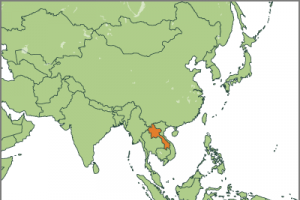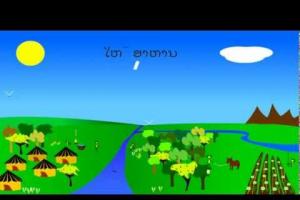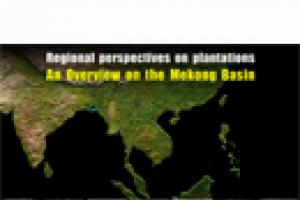Laos
Bulletin articles
30 September 2012
With an increasing global demand for natural rubber in the past few years, large-scale rubber plantations in Laos are expanding, causing conflicts with local communities in a country where, in early 1990s, it was widely accepted as well as referred by scholars and people who study about Laos that about 80% of the Laos people relied directly on the forest – including the river - for their physical, cultural and spiritual well-being.
Other information
30 November 2011
On the first week of November, International Rivers launched an international petition calling on the Prime Ministers of Laos and Thailand to cancel plans to build the Xayaburi Dam. They expect to collect as many signatures as possible to help add pressure on these governments before the upcoming Mekong River Commission Council meeting that will take place from next December 7-9th.
Multimedia
21 September 2011
(Lao)
ປ່າໄມ້ມີຄວາມຫມາຍຢ່າງໃດຕໍ່ຊາວບ້ານ? ປ່າໄມ້ຄືຊີວິດ ການປູກຕົ້ນໄມ່ ອຸດສາຫະກຳ ແມ່ນຫຍັງ?
Other information
27 February 2010
A research project was carried out in Laos to evaluate the economic, social and ecological impacts of large-scale land concessions to plant rubber and for making recommendations for the future management of land in Laos PDR. Two provinces were selected in the south of Laos (Champassak and Salavane), to conduct research over the course of one year from July 2007 to July 2008.
Bulletin articles
30 December 2009
Hydropower is often portrayed as “clean” or “green” energy and as part of the solution for preventing fossil fuel-related climate change. However, government-sponsored and corporate-promoted hydropower implies building huge dams that result in environmental destruction and widespread violation of human rights, ranging from loss of livelihoods to forced evictions and related cases of repression.
Bulletin articles
30 July 2009
A Chinese company called Shandong Sun Paper is planning to establish 100,000 hectares of eucalyptus plantations in Savannakhet province in central Laos. Of this area, the government has granted a 50 year land concession to Sun Paper for 30,000 hectares. The remaining 70,000 hectares is to be planted by farmers on their own land, under contract to Sun Paper. The US$15 million project is planned to start in early 2010.
Bulletin articles
29 June 2009
PRESS RELEASE. In a bold outpouring of public concern for Southeast Asia’s Mekong River, more than 15,000 people from within the six-country Mekong region and around the world have signed a “Save the Mekong” petition urging governments to abandon plans for hydropower development along the river’s mainstream. The petition – written in seven languages - will be hand-delivered to Thailand’s Prime Minister H.E.
Bulletin articles
29 April 2009
The Mekong River is one of the world’s major rivers and flows along 4,350 km (2,703 miles) draining an area of 795,000 km2. (1) As Aviva Imhof from IRN beautifully describes it, “the Mekong River is a changing kaleidoscope of cultures, geography and plant and animal life. From a small trickle in Tibet, the river quickly gathers steam and carves magnificent gorges through Yunnan Province of China.
Publications
15 December 2008
Eucalyptus, oil palm, rubber and jatropha monoculture plantations are expanding onto local communities’ lands and forests in the Mekong region’s countries. Promoted under the guise of development, poverty alleviation and even climate change mitigation, such plantations are resulting in severe social and environmental impacts.
Bulletin articles
15 December 2008
The inter-meshing of the six economies in the Mekong Basin since the 1990s has been fostered under the Greater Mekong Sub-region economic cooperation programme. This was aimed at increasing the flow of cross-border investment from countries with considerable economic might such as China, Thailand and Vietnam into neighbouring countries such as Laos PDR and Cambodia, which have a ‘doors wide open’ approach calling for foreign companies to come to invest.
Other information
15 December 2008
Investments by foreign companies in commercial tree plantations in Laos PDR increased sharply increased during 2004-2006. Large scale plantations are promoted through state land concessions. Currently, an area of 167,000 ha has been transferred to foreign companies under large scale land concessions in the central and south regions of Laos. Of these, 48% or 80,000 ha are dedicated to rubber, and 28% of 46,600 ha are allocated to growing eucalyptus. However, the total area for growing rubber throughout the country has increased to 182,900 ha.



